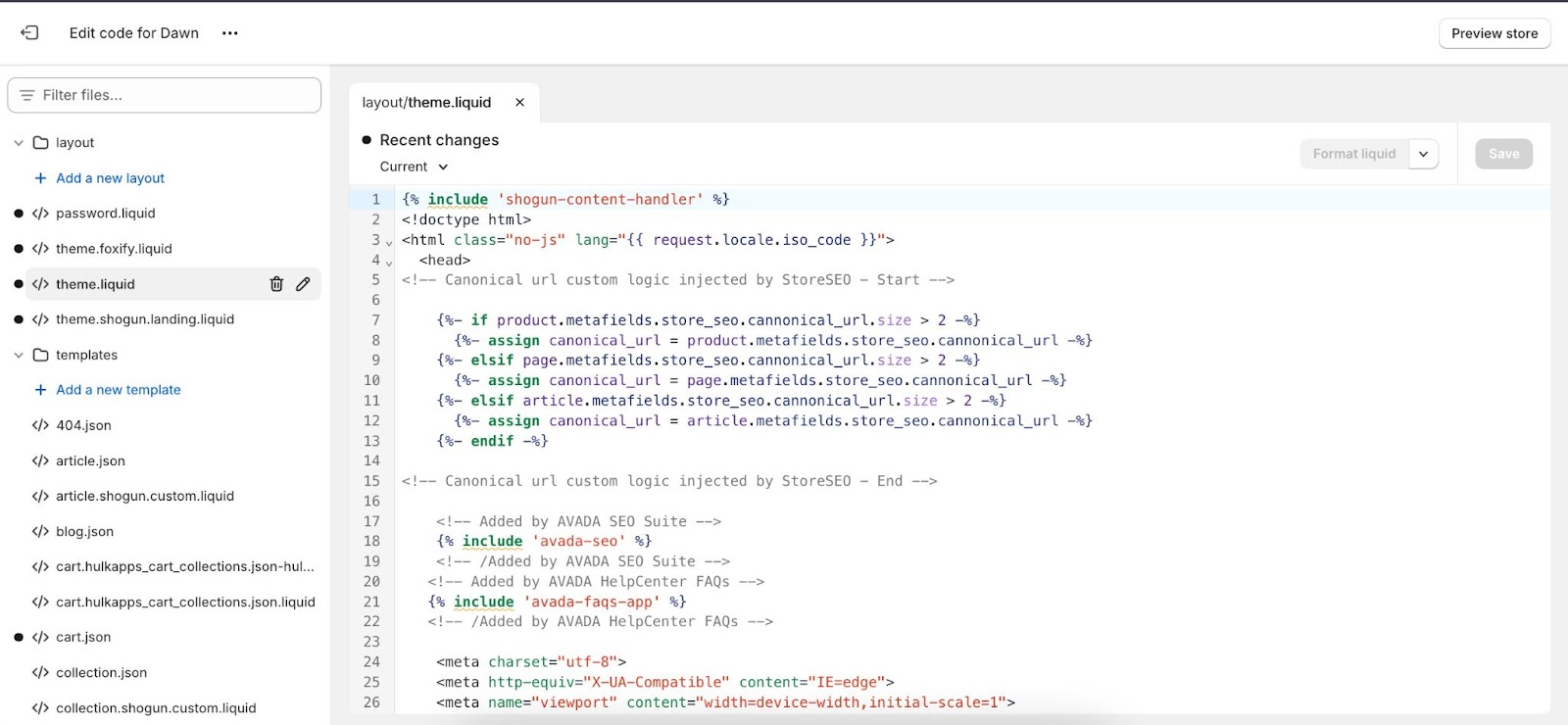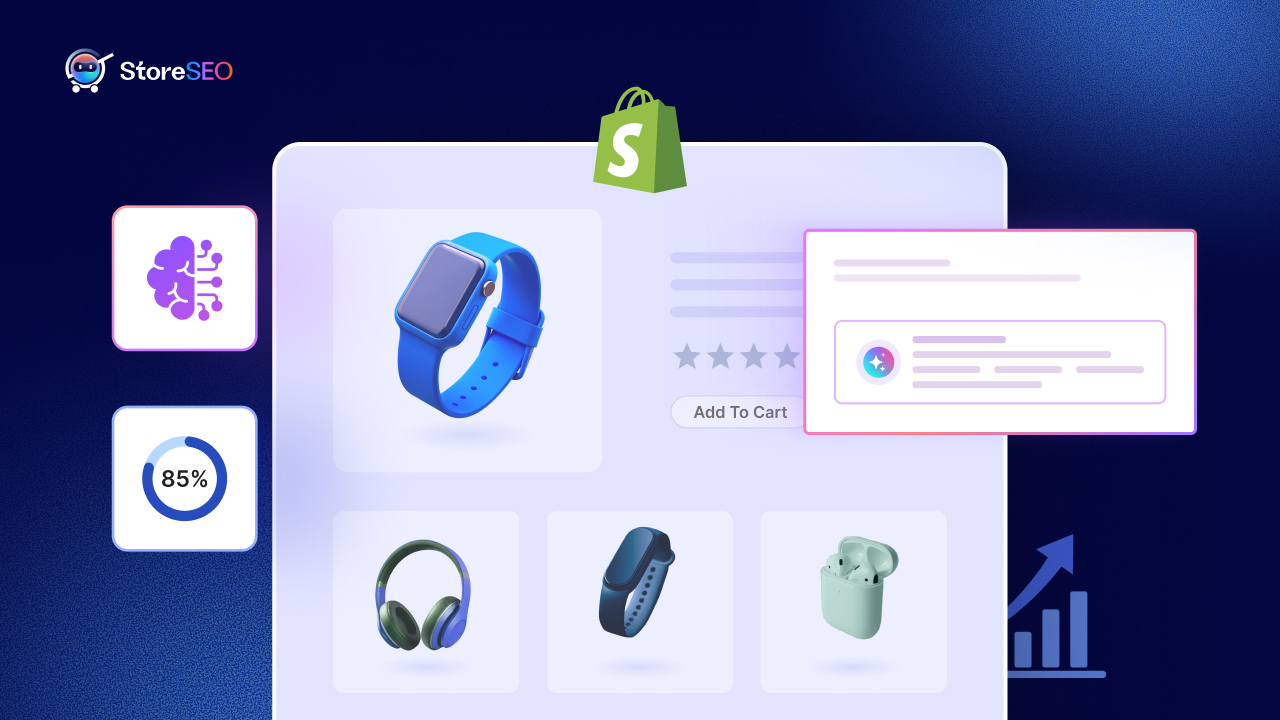With so many online stores competing for attention, improving your store’s SEO can make a real difference in your sales and visibility. One powerful thing that many Shopify merchants overlook is review schema. But can a review schema or any other SEO schema improve your Shopify store’s SEO? In this blog, you will discover what review schema is, how it works, and how you can easily implement a review schema to give for your Shopify store.

What is Review Schema?
Review schema is a type of structured data markup that helps search engines understand the content of your web pages, specifically the reviews and ratings related to your products. When you add review schema to your product pages, you are essentially providing search engines with detailed information about customer feedback, including star ratings, review counts, and reviewer details.
Unlike other schema types, such as product or FAQ schema, review schema focuses solely on reviews. This means that when someone searches for your products, Google and other search engines can display rich snippets, such as star ratings and review counts, directly in the search results. This visual enhancement makes your listings more attractive and informative for potential customers.
How Review Schema Works on Shopify
On Shopify, review schema can transform the way your products appear in search results. When implemented correctly, your product listings can feature eye-catching review stars, ratings, and the number of reviews. This additional information is known as a “rich snippet,” and it helps your products stand out from competitors who may not be using schema markup.
Shopify does offer some basic schema support, but it is often limited and may not cover all the details you want to showcase. For more control and customization, many merchants turn to third-party apps or plugins. This is where StoreSEO comes in. StoreSEO offers an easy-to-use SEO schema feature that allows you to add and manage review schema on your Shopify store without any technical hassle.
SEO Benefits of Implementing Review Schema on a Shopify Store
Implementing a review schema on your Shopify store comes with several significant SEO benefits. Altogether, they contribute to the organic growth.
Boost Organic Visibility to Expand Your Reach and Attract More Visitors
Rich snippets, such as review stars and ratings, make your product listings more noticeable in search engine results. This extra visibility can help you attract more clicks and potential customers.
Drive Higher Click-Through Rates (CTR)
Listings with review stars and ratings are proven to receive more clicks than those without. When shoppers see positive reviews directly in the search results, they are more likely to visit your store.
Build Trust with Your Audience Through Transparent and Authoritative Online Practices
Displaying reviews and ratings builds credibility with potential buyers. When customers see that others have had positive experiences with your products, they are more likely to trust your brand.
Bring the Potential for Higher Rankings by Optimizing Your Website
While the review schema itself may not directly boost your rankings, it helps search engines better understand your content. This improved understanding can lead to higher rankings over time, especially when combined with other SEO strategies.
Enhance User Experience to Keep Visitors Engaged and Coming Back for More
By making it easier for shoppers to see product ratings and reviews, you help them make informed decisions faster. This can lead to increased satisfaction and more sales.
How to Add Review Schema to Your Shopify Store
There are several ways to add review schema to your Shopify store. Mostly used ways are manual coding, and using the apps. Let us explore:
Manual Coding Review Schema for a Shopify Store
To manually add or review product review schema in your Shopify store, you need to edit your theme files and insert or audit the appropriate JSON-LD structured data. Here’s a step-by-step guide:
Step 1: Access Your Theme Code
In your Shopify admin, go to Online Store > Themes. Click Actions > Edit Code to access your theme files.

Step 2: Locate the Relevant File
For product reviews, open the main-product.liquid or product.liquid file. This is where the product and review schema are typically added. You may also need to check the theme.liquid for site-wide schema elements like Organization or BreadcrumbList.

Step 3: Identify or Add the Schema Markup
Look for an existing <script type=”application/ld+json”>…</script> block. This is where schema markup is usually placed. If missing or you need to update, generate or craft your JSON-LD code for review schema. Use a schema markup generator or Google’s Structured Data Markup Helper to ensure accuracy.
Step 4: Structure Your Review Schema
For individual reviews, use the “@type”: “Review” schema. Like, aggregated ratings, use “@type”: “AggregateRating”. Include required fields such as:
- author
- datePublished
- reviewRating (with ratingValue and bestRating)
- reviewBody
- itemReviewed (details about the product)
Example snippet:
<script type="application/ld+json">
{
"@context": "http://schema.org",
"@type": "Product",
"name": "{{ product.title }}",
"review": {
"@type": "Review",
"author": "{{ review.author }}",
"datePublished": "{{ review.date }}",
"reviewBody": "{{ review.body }}",
"reviewRating": {
"@type": "Rating",
"ratingValue": "{{ review.rating }}",
"bestRating": "5"
}
},
"aggregateRating": {
"@type": "AggregateRating",
"ratingValue": "{{ product.average_rating }}",
"reviewCount": "{{ product.review_count }}"
}
}
</script>Note: Replace the Liquid variables with your theme’s variables or static values as necessary.
Step 5: Save and Test Your Changes
Save the file after inserting or updating the schema code. Use Google’s Rich Results Test to validate your schema markup and ensure there are no errors
Using SEO Apps
The easiest and most effective way to implement review schema is by using a best Shopify SEO app. Some of them has SEO schema feature. It allows you to add various SEO schemas to your Shopify product pages with just a few clicks. You do not need any technical skills, and the app keeps your schema markup up-to-date as your products and reviews change. After adding review schema, you can use Google’s Rich Results Test to verify that your markup is working correctly and that your pages are eligible for rich snippets.

Best Practices for Maximizing Review Schema Impact For Shopify Store
Making the most of the review schema on your Shopify store can significantly boost your visibility in search results, increase click-through rates, and build trust with potential customers. Here is a conversational breakdown of the best practices you should follow.
Choose the Right Review App and Customize It
Start by selecting a review app that fits your business needs. Shopify’s trusted product review apps are designed to integrate smoothly with your store. When picking an app, look for features such as customization options, automation, collect reviews, reminders, and easy integration with other tools. Once you have chosen your app, take time to adjust the appearance, fonts, colors, and layouts to your brand, and make sure the review form is user-friendly. This encourages more customers to leave feedback and ensures your reviews look trustworthy and inviting.
Implement and Optimize Review Schema Markup
The review schema is what allows search engines to display your store’s ratings and reviews directly in search results, creating those eye-catching rich snippets. You can add schema markup manually by editing your Shopify theme files and inserting JSON-LD code, or use Shopify apps like Schema App Core or JSON-LD for SEO for a simpler, automated approach. Whichever method you choose, make sure your schema includes key details: customer ratings, written reviews, aggregate ratings, and review dates.
Combine Review Schema with Other SEO Schema Types
For even greater impact, combine review schema with product schema. This lets you showcase not just reviews, but also product names, prices, availability, and images in search results. When you combine these, your listings can display star ratings and review counts, which can increase click-through rates by up to 35 percent. Adding an organization schema, which highlights your business details, can further strengthen your online presence.
Keep Your Schema Accurate and Up to Date
Accuracy is crucial. Make sure the information in your schema matches what is on your product pages. As your product catalog or reviews change, update your schema markup to keep everything consistent.
Encourage Genuine Customer Reviews
The effectiveness of your review schema depends on having a steady stream of authentic reviews. Encourage customers to leave feedback by offering incentives like discounts or loyalty points, sending personalized follow-up emails after purchase, and making the review process as easy as possible. Respond to all reviews, both positive and negative show you value customer input and are committed to improving your service.
Test and Validate Your Markup Regularly
After implementing or updating your schema, always test it. Use tools like Google’s Rich Results Test to make sure your structured data is error-free and includes all required fields. This step is essential to ensure your reviews and ratings appear correctly in search results and to maintain your SEO advantage.
Stay Updated and Evolve Your Schema Strategy
Schema markup is not a set-it-and-forget-it task. As your store evolves and search engine requirements change, keep your schema current. Explore advanced schema types like FAQ or video schema for further enhancements, and consider combining multiple schema types for a broader impact.
How StoreSEO Makes SEO Schema Implementation Easy
StoreSEO is designed to make SEO simple and effective for Shopify merchants. With StoreSEO’s automated schema markup feature, you can add review schema to your product pages without any coding or technical knowledge. The app is compatible with most Shopify themes and updates your schema markup automatically as your products and reviews change. By using StoreSEO, you ensure that your store is always optimized for the latest SEO best practices, including various types of SEO schema. This gives you a competitive advantage and helps you attract more customers from search engines.
Create Trust and Build Store’s Authority With Review Schema on Your Shopify Store
Review schema is a powerful tool that can improve your Shopify store’s SEO by increasing visibility, boosting click-through rates, and building trust with potential customers. By implementing review schema, you can make your product listings stand out in search results and drive more qualified traffic to your store. With StoreSEO’s easy-to-use schema feature, adding review schema to your Shopify store has never been easier. Start using StoreSEO today and see the difference it can make for your business.
FAQ About Can Review Schema Improve My Shopify Store’s SEO
What is a Review Schema?
Review schema is a type of structured data that helps search engines understand and display reviews and ratings in search results.
Does Shopify Support an Out-of-the-Box Review Schema?
Shopify offers some basic schema support, but for full control and customization, it is best to use a trusted SEO app like StoreSEO.
How Long Does It Take for Review Stars to Appear In Google?
It can take anywhere from a few days to several weeks for Google to display review stars, depending on how often your site is crawled and indexed.
Can a Review Schema Guarantee Higher Rankings?
While review schema can improve visibility and click-through rates, it does not guarantee higher rankings. It should be used as part of a comprehensive SEO strategy.
How Does StoreSEO Help With Schema Markup?
StoreSEO automates the process of adding and updating schema markup, making it easy for Shopify merchants to implement review schema without any technical skills.









